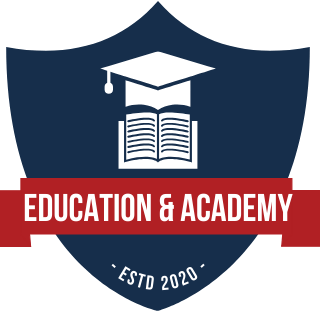Table of Contents
- Introduction
- 1. Inspiring STEM Engagement
- 2. Enhancing Critical Thinking Skills
- 3. Promoting Global Collaboration
- 4. Integrating Technology in Learning
- 5. Creating New Career Pathways
- Conclusion
- FAQs
Introduction
Space exploration has always ignited the imagination of humankind. From the moon landing to Mars rovers, the vastness of space has inspired generations. But beyond the thrill of discovery, space exploration is also having a profound impact on education. In this article, we will explore five ways in which space exploration is shaping future education, fostering curiosity, enhancing critical thinking, and paving the way for new career opportunities.
1. Inspiring STEM Engagement
One of the most significant impacts of space exploration is its ability to inspire engagement in STEM (Science, Technology, Engineering, and Mathematics) fields. Programs like NASA’s Artemis mission or SpaceX’s Mars colonization plans capture the imagination of students.
The Power of Stories: Stories of astronauts, engineers, and scientists making groundbreaking discoveries motivate students to explore these fields. Educational initiatives such as the NASA STEM Engagement program provide resources for educators, making it easier to integrate space topics into their curriculum.
Visual Element: Engagement Statistics
| Year | Student Engagement in STEM (%) |
|---|---|
| 2015 | 30 |
| 2016 | 35 |
| 2020 | 50 |
| 2023 | 65 |
The increase in engagement reflects a growing interest in STEM careers that is directly linked to space exploration initiatives.
2. Enhancing Critical Thinking Skills
Space exploration requires rigorous problem-solving and critical thinking. Students learn to approach complex challenges, such as navigating spacecraft or conducting experiments in zero gravity.
Hands-On Learning: Programs like the Mars Rover Challenge allow students to design and build their own rovers, fostering teamwork and critical thinking skills. The process of trial and error teaches resilience and adaptability, essential traits for future leaders.
Case Study: The Mars Rover Challenge
Many participating schools have reported improved student performance in science and math after engaging in the Mars Rover Challenge, showcasing the direct correlation between hands-on projects and academic success.
3. Promoting Global Collaboration
Space is a frontier that knows no borders. International projects like the International Space Station (ISS) highlight the importance of global collaboration.
Building Partnerships: Collaboration in space exploration enables students to connect with peers from different countries. Programs that involve international students in joint projects foster cultural understanding and teamwork. ESA Education offers various programs that encourage global participation in space-related projects.
Visual Element: Global Participation
| Country | Number of Students Involved |
|---|---|
| USA | 10,000 |
| Canada | 5,000 |
| Europe | 15,000 |
| Asia | 8,000 |
The table above illustrates the diverse participation in international space education programs, emphasizing the global nature of space exploration.
4. Integrating Technology in Learning
Space exploration pushes the boundaries of technology, providing educational institutions with the latest tools and resources. From virtual reality (VR) simulations of space missions to data analysis of astronomical phenomena, technology enhances learning experiences.
Innovative Learning Environments: Schools are increasingly adopting tools like VR and augmented reality (AR) to immerse students in space environments. Programs like Google Expeditions allow students to explore the solar system without leaving the classroom.
Benefits of Technology in Education
- Increased Engagement: Interactive lessons keep students actively involved.
- Personalized Learning: Technology allows for tailored educational experiences.
- Access to Resources: Students can access a wealth of information and research from reputable sources.
For insights on how technology is shaping education, check out Top 10 Digital Tools Transforming Classrooms 2024.
5. Creating New Career Pathways
As space exploration continues to evolve, so do the career opportunities associated with it. Fields like astrobiology, aerospace engineering, and space law are becoming increasingly relevant.
Emerging Careers: With companies like SpaceX and Blue Origin leading the charge, students are presented with new career paths that were once thought to be limited to government agencies. Educational institutions are responding by offering specialized programs in aerospace and related fields.
Career Pathways Table
| Career Field | Average Salary (USD) | Projected Growth Rate (%) |
|---|---|---|
| Aerospace Engineering | $115,000 | 8 |
| Astrobiology | $95,000 | 10 |
| Space Law | $125,000 | 7 |
This table highlights the lucrative and growing fields related to space exploration, encouraging students to consider these options for their futures.
For more information on how education systems are adapting to these changes, visit Key Milestones in 20th Century Education Evolution.
Conclusion
Space exploration is more than just a scientific endeavor; it is a catalyst for educational transformation. By inspiring students to engage with STEM, enhancing critical thinking skills, promoting global collaboration, integrating technology, and creating new career pathways, space exploration is shaping the future of education. As we continue to reach for the stars, we are also paving the way for a generation of learners who will innovate and lead in an increasingly complex world.
FAQs
1. How can teachers incorporate space exploration into their curriculum?
Teachers can use resources from organizations like NASA and ESA to find lesson plans, activities, and multimedia resources that align with their educational goals.
2. What are some popular space exploration projects for students?
Projects like the Mars Rover Challenge, the Artemis Moon Mission, and participation in global science competitions are excellent ways to engage students.
3. How does space exploration impact local education systems?
Space exploration initiatives often lead to increased funding for STEM programs, partnerships with local businesses, and improved student engagement in science and technology.
4. Are there scholarships available for students interested in space-related careers?
Yes, many organizations, including NASA and various universities, offer scholarships specifically for students pursuing careers in aerospace, physics, engineering, and related fields.
For more insights into educational initiatives and their historical context, consider checking The Rise of Public Education: Key Milestones and Trends for a broader perspective.
This article aims to provide a comprehensive overview of how space exploration is influencing education, encouraging readers to take an active interest in both fields.



